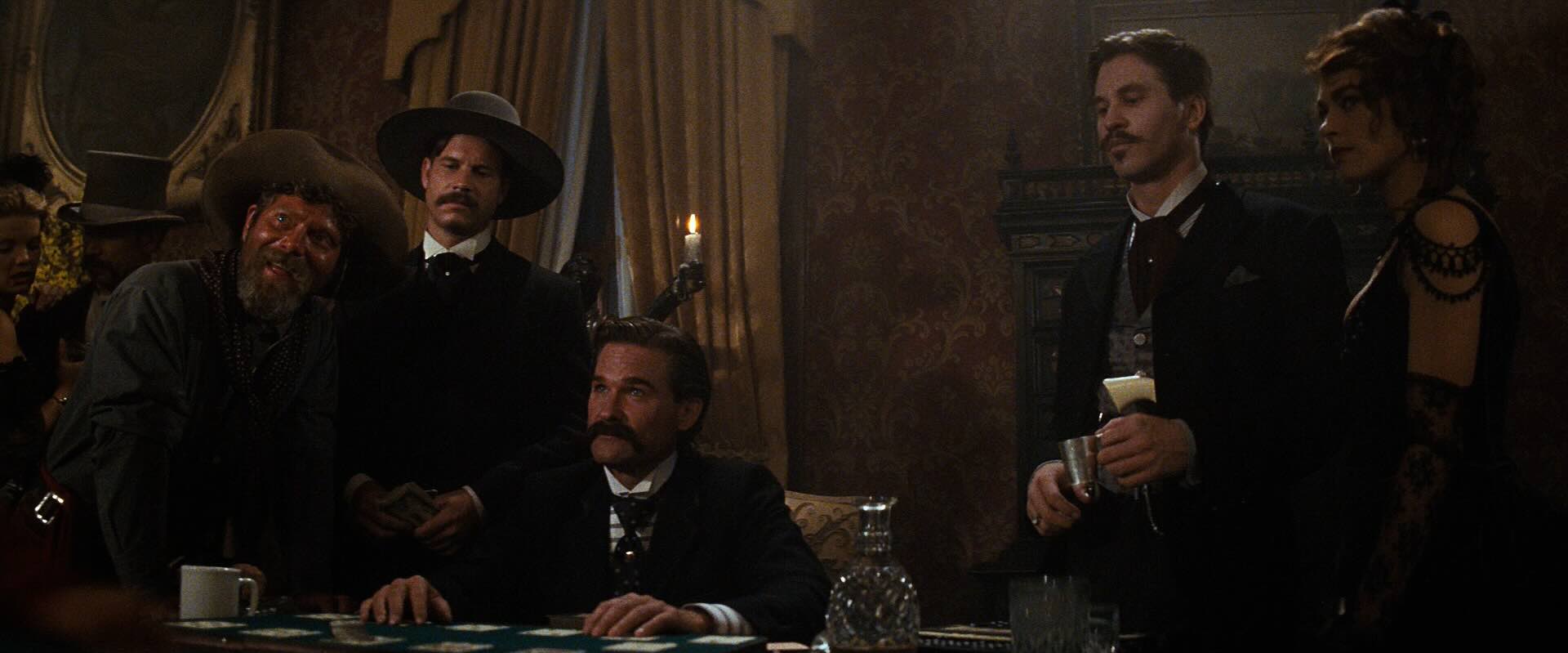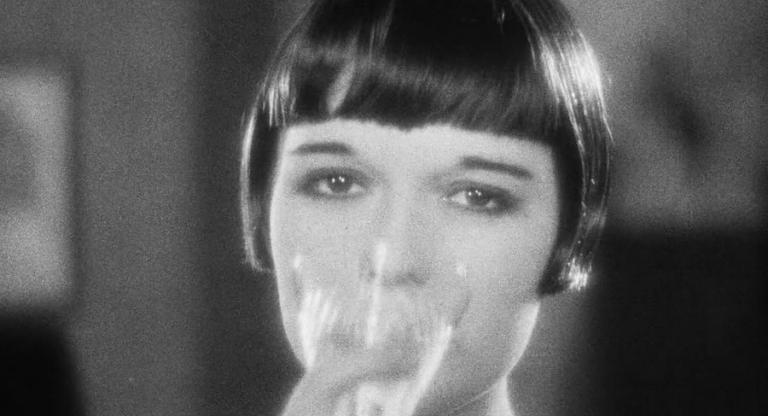George P. Cosmatos does not open his 1993 revisionist western Tombstone with a colorful wide-screen vista or a shot of his A-list ensemble cast, which was much touted in the film’s marketing campaign. Cosmatos opens with window-boxed 1.33:1 footage of the first western, Edwin S. Porter’s The Great Train Robbery (1903). And, it is through this montage of images from Porter’s film, and some articulate, albeit characteristically gruff, narration from Robert Mitchum, that Cosmatos establishes the outlaw universe of his own film, which is as much in conversation with the true story it depicts, as it is with the history of the genre it belongs to.
Tombstone followed in the footsteps of Clint Eastwood’s breakout box office success and awards juggernaut Unforgiven (1992) as part of a trio of stylish westerns that sought screen-space in American theaters the following year. With Unforgiven, Eastwood provided the western genre with an elegy of sorts. A decidedly grim, albeit innately human, film about trauma and revenge, Unforgiven saw Eastwood both wrestle with the characters he made a career of playing and deliver the audience exactly what they wanted with his name on the marquee. Cosmatos enjoyed a career as a Hollywood journeyman, dabbling in various genres over a career that spanned nearly three decades. But, it wasn’t until his penultimate film that he made his first western. Tombstone followed tough-as-nails genre entries like Rambo: First Blood Part II (1985) and Cobra (1986), which Cosmatos made back-to-back with Sylvester Stallone, as well as the technically challenging underwater horror show Leviathan (1989). Cosmatos excelled in the technical proficiency that came with staging action and, based on earlier films like the World War II action films Massacre in Rome (1973) and Escape to Athena (1979), had a vested interest in history. Who better to update the tale of Wyatt Earp for the 1990s?
If you were to actually ask anyone that in 1993, the answer would have been Kevin Costner, who went on to star in Lawrence Kasdan’s Wyatt Earp (1994). But where Kasdan and Costner (who also served as producer) sought to give Earp a grandiose, 191-minute biopic befitting of an American icon, Cosmatos made Earp’s story a sprawling and bullet-riddled ensemble that reflected the style of ‘90s blockbuster filmmaking; the kind of picture where people can be shot dead one moment and Powers Boothe can rambunctiously speak of “drilling the devil in the ass” the next. Like other Cosmatos films, particularly Cobra, violence proves the director’s strong suit. Tombstone delivers in brass tacks shootouts, much more so than it does fleeting conversations about mortality and spirituality. Picking up where Unforgiven left off, Cosmatos takes Eastwood’s climactic, audience-serving stand-off and offers even more action and violence. The Wild West of Cosmatos’s Tombstone is unapologetically Wild. Released 90 years after The Great Train Robbery, it is every bit as blunt as that film’s image of the outlaw shooting the audience square in the face.
Tombstone screens this Friday, December 27, at the 4 Star.




